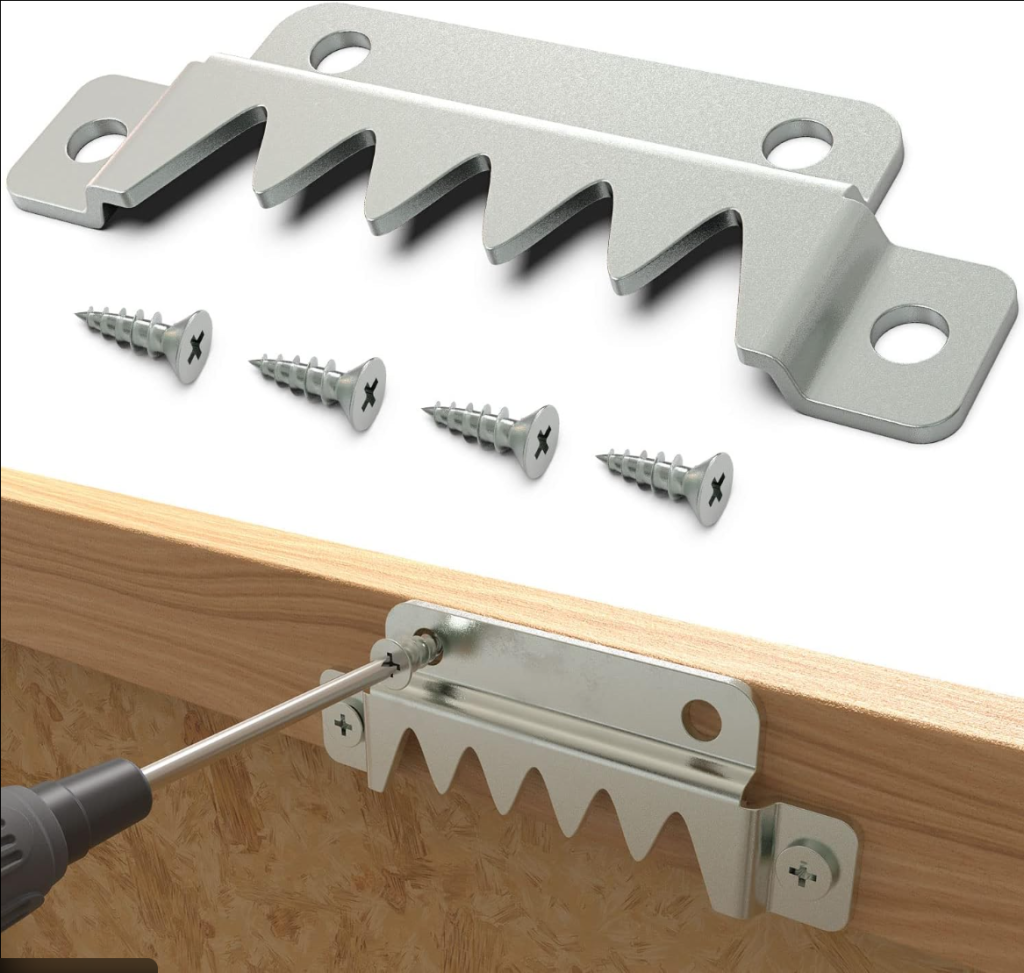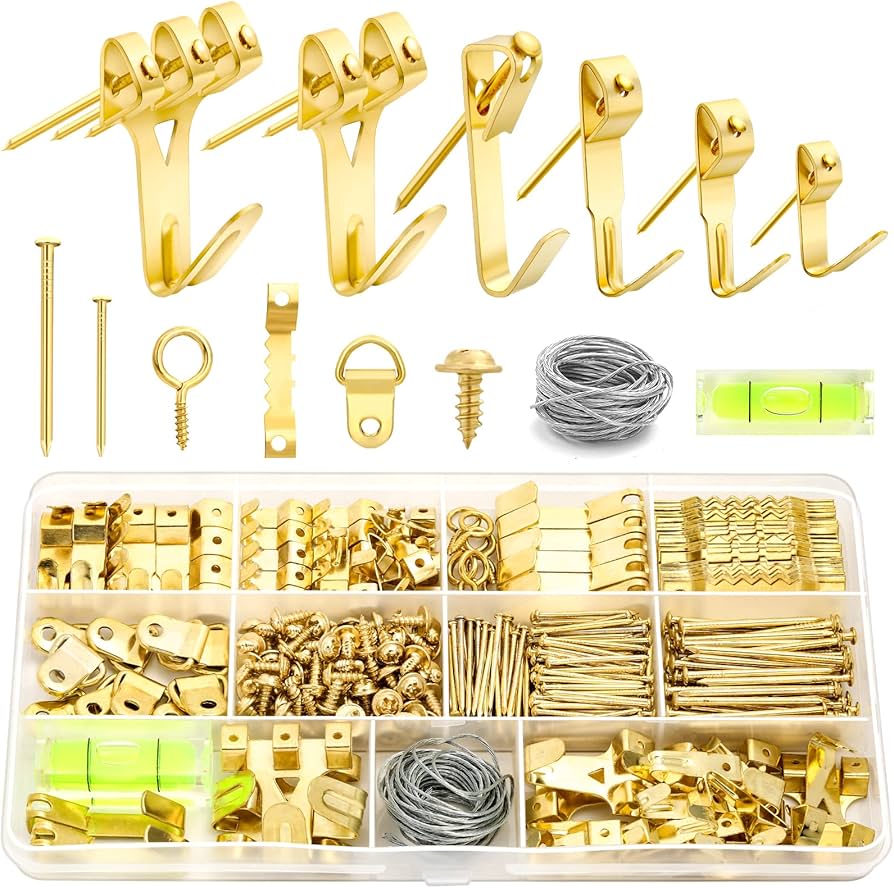Hanging art can seem deceptively simple—until you’re staring at a heavy frame, a bare wall, and ten types of hooks at the hardware store. Choosing the right hanging hardware isn’t just about aesthetics; it’s about safety, wall integrity, and longevity.
This guide walks you through the most common types of picture hanging hardware, when to use them, and how to match them to your frame weight, wall type, and layout goals.
🛠️ Basic Categories of Hanging Hardware
There are two main categories of picture hanging systems:
- Hardware Attached to the Frame
- Hardware Mounted to the Wall
Each category has multiple options, and choosing the right combination is key.
📌 Frame-Back Hardware Options
These are the pieces that attach directly to your frame:
1. D-Rings
- Best for: Medium to large frames
- Use with: Hanging wire or directly on screws
- Notes: Offers stability and keeps frames flush to the wall
2. Sawtooth Hangers
- Best for: Small to medium lightweight frames
- Use with: Nails or screws
- Notes: Quick to install but may shift over time; avoid on heavy pieces
3. Keyhole Hangers
- Best for: Modern, flush-mount frames and decor
- Use with: Screws inserted into the wall
- Notes: Precise but tricky to align—measure carefully
4. Hanging Wire
- Best for: Versatile use with hooks, nails, or screws
- Notes: Allows adjustment and centering; can cause tilt if not tight
5. French Cleat
- Best for: Heavy or large items (mirrors, oversized frames)
- Use with: Two interlocking metal or wood brackets
- Notes: Very secure and distributes weight evenly

🧱 Wall-Mounted Hanging Solutions
What goes in the wall depends on the weight of the piece and type of wall (drywall, plaster, concrete, brick).
➤ For Lightweight Pieces (Under 10 lbs):
- Nails: Ideal for small frames and soft drywall
- Adhesive Hooks or Velcro Strips (e.g., Command): Great for renters or damage-free solutions
➤ For Medium Weight (10–25 lbs):
- Standard Picture Hooks: Brass hooks rated for specific weights (e.g., 20 lb hooks)
- Screws with Anchors: More reliable than nails in drywall
➤ For Heavy Pieces (25+ lbs):
- Toggle Bolts: Expand behind drywall to grip securely
- Molly Bolts: Suitable for medium to heavy loads
- French Cleats or Hanging Bars: Best for extremely heavy or wide art
➤ For Plaster or Masonry Walls:
- Use masonry nails, anchors, or a hammer drill with masonry screws
- Avoid regular drywall anchors—they may crack or pull out
🧩 Choosing Based on Your Needs
| Frame Size | Weight | Wall Type | Recommended Hardware |
|---|---|---|---|
| Small Print (8×10) | < 5 lbs | Drywall | Sawtooth or Command Strip |
| Medium Frame (16×20) | 10–15 lbs | Drywall | D-rings + picture hooks |
| Large Frame (24×36+) | 20–50 lbs | Drywall/Plaster | D-rings + toggle bolts or French cleat |
| Mirror or Heavy Art | 50+ lbs | Any | French cleat or lag bolts into studs |
| Brick/Concrete | Any | Brick | Masonry screws or anchors |
✨ Bonus Tools for Hanging Success
- Level: To keep things straight
- Tape measure: For consistent spacing
- Pencil: To mark anchor points
- Painter’s tape: Layout guides without damaging walls
- Museum putty: Keeps frames from shifting (especially great for gallery walls)
🧠 Final Thoughts
Picture hanging is a blend of art and engineering. The right hardware not only protects your artwork and your walls—it also ensures a lasting, professional result. Take your time, use the proper supports for your wall and artwork, and always err on the side of secure.

Leave a Reply